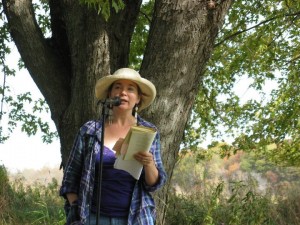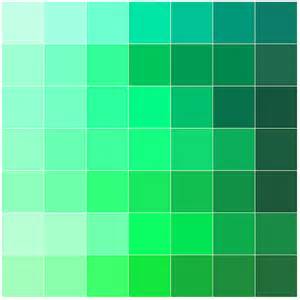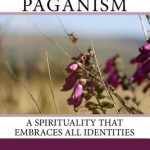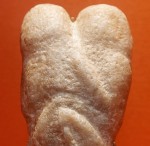 Author’s note: This is what happens when you dive back into your old college major after twenty years more or less away. It’s a bit heady, some weeks, the learning curve. Some weeks it’s all I can do to stare out into the trees.
Author’s note: This is what happens when you dive back into your old college major after twenty years more or less away. It’s a bit heady, some weeks, the learning curve. Some weeks it’s all I can do to stare out into the trees.
Recently I’ve been thinking again about Greens.
I experience Green—or maybe it’s more accurate to say I’ve experienced multiple greens. I think we all do—though we don’t all talk about it, I guess. Some people don’t like to discuss greens. Others find it beside the point. Myself, I’m fascinated. Recently I was lucky enough to listen in on an assemblage of very smart people who were discussing the nature of greens. Since I haven’t really thought hard about Green in a long time—although I have had some more or less direct experiences—I listened eagerly to learn what I could.
“It think we can all agree Green is Green,” began the first. “It is essentially one color, with many variations.” He displayed paint sample cards from the hardware store to prove his point.
Another person waved her hands in the air, objecting, “Wait a minute. You simply cannot lump Lime, Seafoam, Pine, Kelly, Teal, and Olive—and those are only a few of the possibilities, remember— into one big amorphous Green. They may all be Greens, but they are distinct and separate shades. I do not experience them as unified—and I would never mix and match,” she added, as she sat down.
“I mix and match all the time,” said a man dressed in loosely flowing garments swirled with various shades. The other shrugged and thought to herself, perhaps he just doesn’t know better. But she decided to keep that opinion to herself.
A couple came to the front at this point, and said that that Green is really a combination of blue and yellow, not one color at all but a blend, an eternal combination of two. “Think of it as a dance,” they said. “You can’t have one without the other.” And they explained that in all their thinking about Green, they focus on the blueness and yellowness, to different degrees at different times.
They were regarded doubtfully by some. “All right…” was the reply, “But I haven’t experienced this blue-and-yellow dance you speak of. Green doesn’t look like blue and yellow to me. It looks like Green. Green is—for me at least—one color.” “Or a multitude,” reminded the man in swirls. His friends nodded.
“Green is found in trees,” replied someone. “If you want to understand Green, look at leaves.” Someone else shook their head. “Green is more than trees. Walking in a forest doesn’t necessarily help us define Green.”
“I first encountered Green through Spock,” countered another. “I used to apologize for that, but I don’t any more. And, though
I no longer identify as a Trekkie…I’m still sort of fond of Leonard Nimoy.” “Who isn’t,” a voice answered.
A new person stood up. “I have looked closely, and there’s no difference between green and red. You all are discussing something that doesn’t exist.” The person next to them said, “Well, maybe you’re colorblind.” They turned and smiled down. “Maybe I’m Clear Sighted–I see more clearly than you do, who believe in Green.”
Another added, after a moment’s pause, “I think we need to break down our ideas about blue and yellow anyway—it’s a lot more complicated than our language allows for at this point.”
“And don’t forget,” a high voice in the back chimed in, “Painters through history have proved sometimes Green may have a bit of red or brown mixed in. It’s not as clear cut as blue and yellow.” Now an argument broke out as to whether shades of red and brown would really affect Green, whether Green could be diluted to the point of being non-Green. What if the paintings were really old, faded or damaged? Could they be trusted as sources? And not everyone was comfortable with blue any longer. Chairs were toppled in the fray but fortunately someone grabbed the mike and it made one of those awful electronic howls which hurt everyone’s ears and reminded them to find their seats once more.
“This is silly. There is an obvious answer. Green is defined by science. There is a range in the light spectrum commonly agreed on. That’s what we can and must rely on.”
Another woman from the front tiredly shook her head as though she had heard this line before. “No one is discounting science in this group. But in questions like this, that’s just another human construct. Who decides how to measure and where to draw the lines on that spectrum human scientists provide?”
A younger man stood up. “And that spectrum doesn’t explain my feelings when I see Green,” he argued. “I can’t and won’t try to separate how Green affects me from the nature of some abstract Green. Green is an interaction, for me.”
“We haven’t even taken synesthesia into account yet,” another said. “Green for me is the number 5 and a high soprano.”
Meanwhile back in a far corner a few people were whispering that teal was not really a Green at all and shouldn’t be counted. At which point, others jumped up shouting that teal is a Green, very definitely a Green, and they who love teal need to be respected. They had tattoos to prove it.
“Can we talk about capitalization?” someone asked.
At this point, I felt the need to escape the hall for a few moments and went to find a drink of water. The voices continued, but all I could hear now was the rise and fall of the general murmur through the doors. I stared out the window into the trees, wondering what I was missing.













